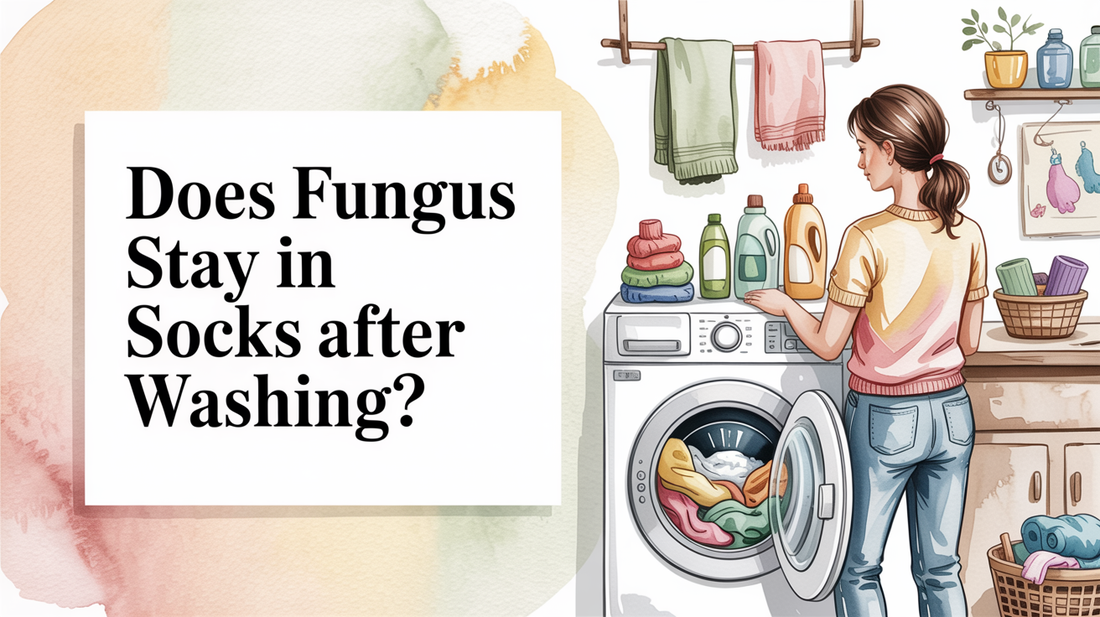Does fungus stay in socks after washing?
laundry disinfection, hot water temperature, antifungal detergents — Many people worry whether their laundry routine effectively eliminates fungus, especially from socks. This article will explore how to ensure effective laundry disinfection and the importance of hot water temperature and antifungal detergents in your washing routine. We'll break it down into three sections, providing actionable tips to help you maintain cleaner, fresher laundry.
What Kills Fungi in Laundry 🧭
To effectively kill fungi in laundry, specific conditions are essential. Using hot water at temperatures of 140°F (60°C) or higher is vital, as this can denature the proteins and structures of most fungi, including athlete's foot. Additionally, incorporating chemical disinfectants like bleach or specialized antifungal detergents can significantly boost your laundry's disinfecting power. It’s also important to remember that the washing process aids in removing fungal spores through both mechanical action and dilution.
- Hot water at 140°F (60°C) or higher kills most common fungi.
- Chlorine bleach, when diluted properly (1:10), is highly effective against fungi.
- Antifungal laundry additives containing tea tree oil enhance efficacy.
- Extended wash cycles (45+ minutes) provide more contact time for better results.
- Oxygen bleach and hydrogen peroxide are great color-safe alternatives.
Try It Tonight: Calm, Fresh Feet ✨
- Wash feet with warm water and mild cleanser; dry thoroughly between toes.
- Apply a small amount of Kissable Feet where needed; massage until absorbed.
- Let skin breathe; slip on breathable socks if desired. Patch-test first if you’re new to this foot cream.
Best Practices for Socks & Towels ✨
Handling socks and towels with care is key to preventing the recontamination of fungi. These items retain moisture and have direct skin contact, making them ideal for fungal growth. It’s important to wash them immediately after use and separate them from other laundry to maintain hygiene. For instance, consider designating a ventilated bag for used socks until laundry day.
- Wash socks and towels immediately after use or store in ventilated laundry bags.
- Always use the hottest water temperature safe for the fabric.
- Adding 1/2 cup of white vinegar during the rinse cycle can help as a natural antifungal agent.
- Completely dry items on high heat or in direct sunlight to prevent moisture retention.
- Wash athletic socks and towels separately to avoid cross-contamination.
Why We Recommend a Gentle Helper 🌿
Kissable Feet is designed for quick absorption and delivers a soothing sensation without any stinging. Its nurse-crafted blend features tea tree, coconut, and calendula, making it a comforting addition to your foot care routine.
- Fast-absorbing comfort with a non-greasy finish.
- Gentle sensation that’s perfect for sensitive feet.
- Clean, bedtime-friendly scent that makes it a joy to use.
Storage & Replacement Timelines 🔍
Proper storage and timely replacement of socks and footwear are crucial for preventing long-term fungal issues. Even washed items can retain residual spores, and worn fabrics may not endure effective disinfection temperatures. Understanding when to replace items helps maintain hygiene.
- Store clean socks in dry, well-ventilated areas away from moisture.
- Replace athletic socks every 6-12 months or when they become thin.
- Discard socks immediately if they retain an odor after washing.
- Rotate shoes to allow proper drying time between uses.
- Consider using UV sanitizing storage boxes for added protection.

